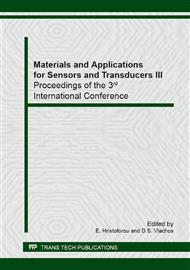p.35
p.39
p.43
p.47
p.51
p.55
p.59
p.63
p.67
Analyzing the Water Budgets of Reservoirs by Using Autonomous Mini Boats
Abstract:
The calculation and estimation of water deposits in both man-made reservoirs and natural reservoirs is very important in several aspects. For surface water reservoirs in hot and dry environments, evaporation is an important factor in their operations since it can cause significant water loss. Typically, hydrologists use different computer models which take into account the effects of evaporation to estimate the water budgets of reservoirs. An important step required for this repetitive process is to calculate the current water budget of a reservoir. In this paper, an autonomous system is proposed aiming to support this step. Unlike the common approaches, the proposed system is fast and accurate, and requires no human effort. In this system, first, an autonomous mini boat follows predefined trajectories at a reservoir and builds a depth map (bathymetric map) of it. Then, an onboard computer calculates the water budget of the reservoir. The proposed system is portable and a single system can periodically serve at several water reservoirs. Field tests in the water reservoir of Kirklareli (Kirklareli dam), Turkey, are in progress.
Info:
Periodical:
Pages:
51-54
Citation:
Online since:
April 2014
Authors:
Price:
Сopyright:
© 2014 Trans Tech Publications Ltd. All Rights Reserved
Share:
Citation:


